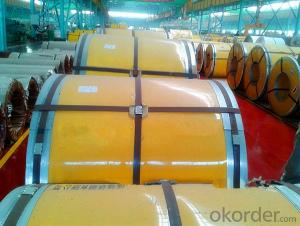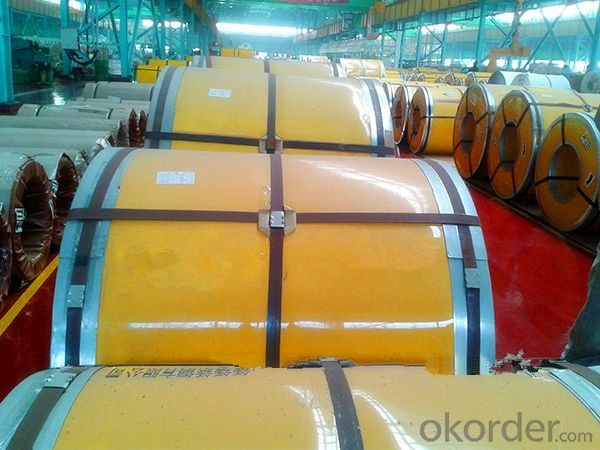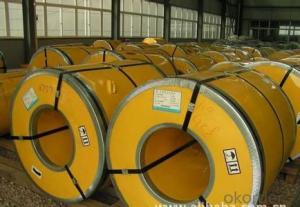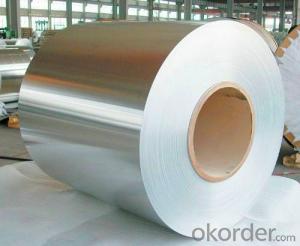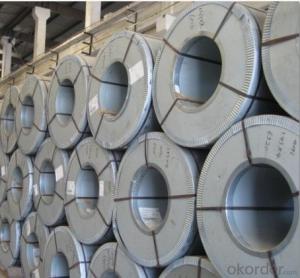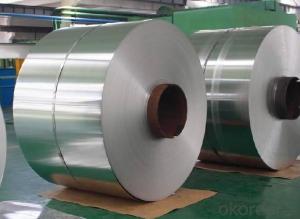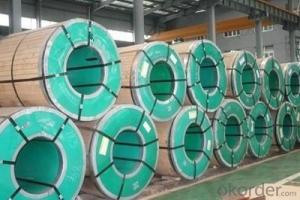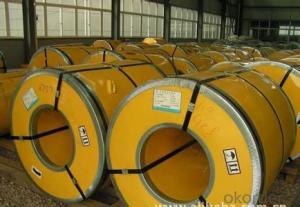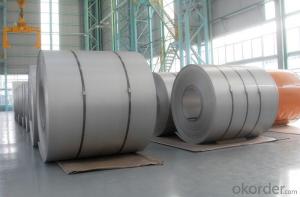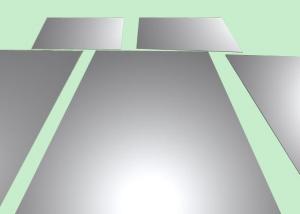Stainless Steel Coil Cold Rolled 201 Surface 2BA with Great Quality
- Loading Port:
- China main port
- Payment Terms:
- TT OR LC
- Min Order Qty:
- 400 m.t.
- Supply Capability:
- 20000 m.t./month
OKorder Service Pledge
OKorder Financial Service
You Might Also Like
1. Structure of Stainless Steel Coil Cold Rolled 201 Descriptions
Stainless Steel 201 is a new kind of Austenite stainless steel by used Mn, N replace Ni. The steel has good corrosion resistance and hot / cold processing performance, instead of 304 stainless steel products for used in the not high of corrosive environment, such as indoor, inland city outdoor etc.
2. Main Features of the Stainless Steel Coil Cold Rolled 201
Product name: Stainless Steel Coil Cold Rolled 201
Thickness: 0.2mm to 1.5mm
Technical: Cold Rolled
Width: 10mm to 1240mm
Type: 200 Series
Length: As customer's requested
Standard: JIS, SUS, AISI, ASTM
Grade: 201-J1, 201-J4, AISI201, AISI202…
Finish: BA, 2B, 8K, NO.3, NO.4, HL…
MOQ: 25 Metric Tons
Hardness: Low Hard(190 HV Max); Half Hard(240-280HV); Full Hard(42-60 HRC)
Ship Term: FOB any port, China or CFR Destination port
Delivery Time: 15 to 20 day after the receive the deposit or 100%LC
Payment Terms: TT 30% for deposit, Balance against the copy of B/L, or 100%LC
Packaging: By wooden pallet, wooden case or according to customer's request
3. Stainless Steel Coil Cold Rolled 201 Images
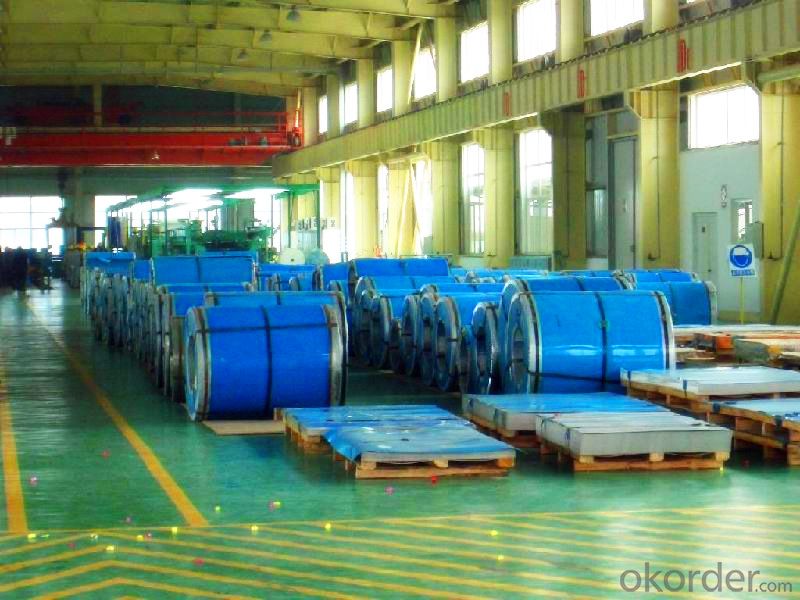
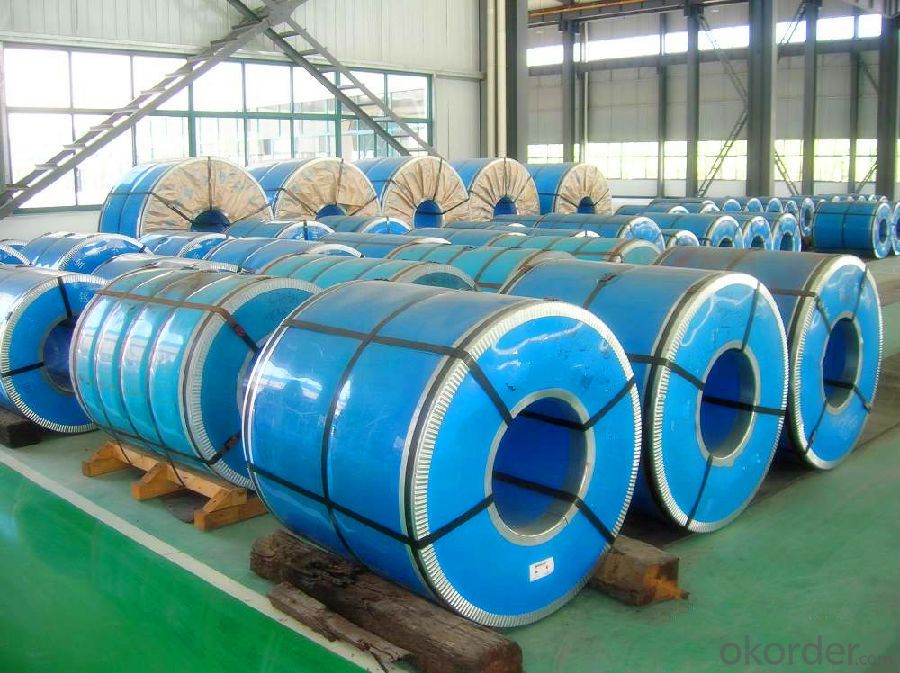
4. Stainless Steel Coil Cold Rolled 201 Specifications
Mechanical Property Contrast | YS (Mpa) | TS (Mpa) | EL(%) | HV | REMARK |
Stainless Steel 201 | 426 | 880 | 52 | 224 | 1.0t |
Stainless Steel 304 | 285 | 710 | 58 | 165 | 1.0t |
Stainless Steel 200 Series Chemicals Contrast (wt. %) | ||||||||
Chemicals | C | Si | Mn | Cr | Ni | N | Other | |
205 | 0.12-0.25 | ≤0.75 | 14.0-15.0 | 16.5-18.0 | 1.0-1.75 | 0.32-0.4 | ||
JIS, | 201 | ≤0.15 | ≤1.0 | 5.5-7.5 | 16.0-18.0 | 3.5-5.5 | ≤0.25 | - |
201L | ≤0.03 | ≤0.75 | 5.5-7.5 | 16.0-18.0 | 3.5-5.5 | ≤0.25 | - | |
202 | ≤0.15 | ≤1.0 | 7.5-10.0 | 17.0-19.0 | 4.0-6.0 | ≤0.25 | - | |
201LN | ≤0.03 | ≤0.75 | 6.4-7.5 | 16.0-17.5 | 4.0-5.5 | 0.1-0.25 | Cu≤1.0 | |
India | 201-J1 | ≤0.08 | ≤0.75 | 7.0-8.0 | 15.0-17.0 | 4.0-5.0 | ≤0.1 | Cu≤1.5 |
201-J3 | ≤0.08 | ≤0.75 | 9.0-10.5 | 14.0-16.0 | 2.0-3.0 | ≤0.15 | Cu≤2.0 | |
201-J4 | ≤0.10 | ≤0.75 | 8.5-10.0 | 15.0-16.0 | ≤1.2 | ≤0.2 | Cu≤2.0 | |
America | 204 | ≤0.03 | ≤1.0 | 7.0-9.0 | 15.0-17.0 | 1.5-3.0 | 0.15-0.3 | (Cu) |
H400 | ≤0.10 | ≤1.0 | 6.0-9.0 | 17.0-19.5 | ≤3.5 | ≤0.3 | - | |
Japan | YUS130S | 0.09 | 0.5 | 11.0 | 18.0 | 6.5 | 0.35 | - |
NTK S-4 | 0.17 | 0.43 | 14.7 | 17.7 | 1.3 | 0.35 | - | |
NM15M | 0.08 | 0.8 | 14.5 | 17.0 | 4.3 | 0.33 | - | |
Europe America | 219 | ≤0.04 | ≤0.75 | 8.0-10.0 | 19.0-21.5 | 5.5-7.5 | 0.15-0.4 | - |
Cromanite | ≤0.08 | ≤1.0 | 9.5-11.0 | 18.0-20.0 | ≤1.0 | 0.4-0.6 | - | |
201 Surface | Characteristic and Application of Stainless Steel Coil Cold Rolled 201 |
2B | The surface brightness and flatness of 2B is better than 2D then through a special surface treatment to improve its mechanical properties,2B could nearly Satisfy comprehensive uses |
No.4 | Polished with abrasive belt of grit#150#180, have better brightness with discontinuous coarse stria, but thinner than NO.3, are used as bathtub buildings inner and electrical appliances kitchen utensils and food processing. |
BA | Cold rolled, bright annealed and skin-passed, the product have excellent brightness like mirror kitchen apparatus, etc. |
8K | The product have excellent brightness and prefer bright can be the mirror. |
5. FAQ of Stainless Steel Coil Cold Rolled 201
Q: Are you factory or trader?
A: We certainly are stainless steel manufacturer and have processing plant.
Q: Can you provide mill test certificate?
A: Yes! Mill test certificate for both hot rolled raw material coils and cold rolled coils are available.
Q: How to get a sample?
A: Free samples are available for your checking and testing. And to get free samples, please send us your detailed receiving address (including post code) and your DHL/FEDEX/UPS account for collecting samples, courier cost will be paid in your side.
Q: How to visit your factory?
A: Most of the main cities in the world have flight to Beijing; you can take flight to Beijing first, then we will lead you to our Wuxi mills.
Q: How to guarantee the quality of the products?
A: We have established the international advanced quality management system,every link from raw material to final product we have strict quality test; We resolutely put an end to unqualified products flowing into the market. At the same time, we will provide necessary follow-up service assurance.
- Q: Are stainless steel strips suitable for cryogenic applications?
- Indeed, cryogenic applications find stainless steel strips to be appropriate. Renowned for their remarkable mechanical properties, corrosion resistance, and thermal stability, stainless steel is favored across diverse sectors, particularly cryogenics. Stainless steel strips exhibit the capability to endure frigid temperatures sans compromising their structural integrity or succumbing to brittleness, an indispensable trait in cryogenic settings. Additionally, stainless steel boasts non-magnetic attributes and low thermal conductivity, both highly desirable in cryogenic applications that necessitate minimal heat transfer and magnetic interference. In summary, stainless steel strips emerge as a dependable and long-lasting choice for deployment within cryogenic applications.
- Q: What are stainless steel strips?
- Stainless steel strips are thin, flat pieces of stainless steel that are commonly used in various industries for their durability, corrosion resistance, and versatility. They are typically made from a combination of iron, carbon, and other elements such as chromium, nickel, and molybdenum, which give them their unique properties. These strips are produced through a process called cold rolling, where stainless steel sheets are passed between rollers to reduce their thickness and create the strips. Stainless steel strips are available in different grades and finishes, each tailored to specific applications. The most commonly used grades include 304 and 316, which offer excellent resistance to corrosion, high temperatures, and chemical exposure. The finishes can range from bright annealed, which provides a reflective surface, to matte or brushed finishes for a more subdued appearance. These strips are widely used in industries such as automotive, construction, electronics, and manufacturing. They are utilized in applications such as automotive trim, architectural and decorative elements, kitchen appliances, medical devices, and electrical components. Due to their strength, they can be formed, bent, or shaped into various configurations to meet specific requirements. Stainless steel strips are favored over other materials due to their longevity, low maintenance, and aesthetic appeal. They are known for their resistance to rust and staining, making them suitable for both indoor and outdoor use. Moreover, stainless steel is a sustainable material as it can be recycled indefinitely without losing its properties. In summary, stainless steel strips are versatile, durable, and corrosion-resistant thin pieces of stainless steel that find extensive use in a wide range of industries. They offer numerous advantages and can be customized to meet specific needs, making them a popular choice for various applications.
- Q: What are the different types of surface coatings for stainless steel strips?
- There are several types of surface coatings available for stainless steel strips, including electroplating, powder coating, and organic coatings.
- Q: What are the different types of corrosion that can affect stainless steel strips?
- There are several types of corrosion that can affect stainless steel strips, including pitting corrosion, crevice corrosion, galvanic corrosion, stress corrosion cracking, and intergranular corrosion.
- Q: How does the thermal conductivity of 111 stainless steel strips compare to other materials?
- Compared to other materials, the thermal conductivity of 111 stainless steel strips is generally lower. When compared to metals like copper or aluminum, stainless steel is not an efficient conductor of heat. However, among the stainless steel family, the 111 grade may exhibit slightly higher thermal conductivity than other grades. Nevertheless, it remains lower than many commonly used materials. For applications that demand high thermal conductivity, materials like copper or aluminum, which possess superior thermal conductivity properties, would be more appropriate.
- Q: What are the different thicknesses available for stainless steel strips?
- Stainless steel strips come in a variety of thicknesses to accommodate different applications and requirements. The thicknesses available for stainless steel strips typically range from 0.0015 inches (0.0381 mm) to 0.125 inches (3.175 mm) or even thicker, depending on the specific needs of the project. These thicknesses are often measured in gauge, with the most common being 22 gauge (0.030 inches) and 16 gauge (0.0625 inches). However, it is important to note that stainless steel strips can also be customized to meet specific thickness requirements if necessary. The choice of thickness will depend on factors such as the intended use of the strips, the level of durability and strength needed, and any specific industry standards or regulations that must be met.
- Q: Can stainless steel strips be used in household appliances?
- Yes, stainless steel strips can be used in household appliances. Stainless steel is a common material choice for appliances due to its durability, resistance to corrosion, and easy maintenance. It is often used for refrigerator doors, stove tops, dishwashers, and other household appliances.
- Q: Can stainless steel strips be used in outdoor signage?
- Indeed, outdoor signage can utilize stainless steel strips. Being a resilient and anti-corrosive substance, stainless steel is well-suited for outdoor usage. It can endure diverse weather conditions, such as rainfall, snowfall, and sunlight, without succumbing to rust or fading. By customizing and shaping stainless steel strips, various sign designs can be crafted, and when securely mounted, they can withstand the forces of wind and other external factors. Furthermore, stainless steel possesses a sleek and contemporary appearance, thereby augmenting the overall aesthetic appeal of outdoor signage.
- Q: Can stainless steel strips be used in pressure vessel manufacturing?
- Yes, stainless steel strips can be used in pressure vessel manufacturing. Stainless steel is a type of steel alloy that contains a minimum of 10.5% chromium, which provides excellent corrosion resistance and durability. These properties make stainless steel strips a suitable material for pressure vessel manufacturing, as they can withstand high-pressure environments and resist corrosion caused by various substances. Additionally, stainless steel can maintain its structural integrity even at high temperatures, making it an ideal choice for pressure vessel applications where heat resistance is required.
- Q: What are the common uses of stainless steel strips in the automotive stamping process?
- Stainless steel strips are commonly used in the automotive stamping process for various applications such as manufacturing automobile body panels, brackets, reinforcements, and structural components. These strips provide excellent corrosion resistance, durability, and strength, making them ideal for withstanding the harsh conditions and environmental factors experienced by vehicles.
Send your message to us
Stainless Steel Coil Cold Rolled 201 Surface 2BA with Great Quality
- Loading Port:
- China main port
- Payment Terms:
- TT OR LC
- Min Order Qty:
- 400 m.t.
- Supply Capability:
- 20000 m.t./month
OKorder Service Pledge
OKorder Financial Service
Similar products
Hot products
Hot Searches
Related keywords
